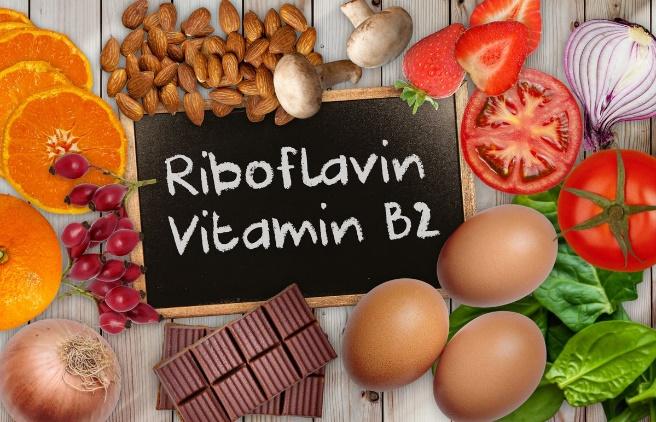Riboflavin, commonly known as vitamin B2, is part of a group of eight essential B vitamins. The primary function of B vitamins is to facilitate the conversion of carbohydrates into glucose, the body’s main source of energy. Additionally, these B-complex vitamins play a crucial role in metabolizing fats and proteins.
Some key functions of riboflavin (vitamin B2):
Energy production:
Riboflavin is involved in the metabolism of carbohydrates, proteins, and fats.
Antioxidant activity:
Riboflavin acts as an antioxidant, helping to protect cells and tissues from damage caused by harmful molecules called free radicals.
Maintenance of healthy skin and vision:
Riboflavin is necessary for maintaining healthy skin, as it plays a role in the production of collagen and supports the growth and repair of tissues.
Red blood cell production:
Riboflavin is involved in the synthesis of red blood cells, which are responsible for carrying oxygen throughout the body.
Nervous system function:
Riboflavin is needed for the proper functioning of the nervous system.
Conversion of other nutrients:
Riboflavin helps in the conversion of other vitamins, such as vitamin B6 and folate, into their active forms, which are necessary for various physiological processes in the body.
It’s worth noting that riboflavin is a water-soluble vitamin, meaning it is not stored in the body to a significant extent.
Here are some examples of riboflavin (Vitamin B2) food sources:
Milk and dairy products:
Milk and dairy products such as cheese and yogurt are rich sources of riboflavin.
Meat and poultry:
Lean cuts of meat and poultry such as chicken, turkey, beef, and pork are good sources of riboflavin.
Fish:
Fish such as salmon, trout, and tuna are good sources of riboflavin.
Eggs:
Eggs are a good source of riboflavin. One large egg provides approximately 0.2 mg of riboflavin.
Leafy green vegetables:
Dark green leafy vegetables such as spinach, kale, and broccoli are good sources of riboflavin.
Whole grains:
Whole grains such as brown rice, whole wheat bread, and oatmeal are good sources of riboflavin.
Other sources of riboflavin include legumes such as lentils and soybeans, as well as fortified breakfast cereals.
Here are some signs and symptoms of riboflavin (Vitamin B2) deficiency:
Oral and skin issues:
One of the early signs of riboflavin deficiency is a sore throat, followed by the development of cracks and sores on the lips (angular cheilitis). The tongue may become swollen and red (glossitis), and the skin around the nose, mouth, and genital area may become oily, scaly, and inflamed.
Eye-related problems:
Riboflavin deficiency can cause sensitivity to light (photophobia) and blurred vision.
Digestive disturbances:
Deficiency of riboflavin can result in digestive issues such as loss of appetite, nausea, and abdominal discomfort. It may also cause diarrhea.
Fatigue and weakness:
Riboflavin plays a crucial role in energy production, so a deficiency can lead to generalized fatigue, weakness, and reduced physical endurance.
Cognitive and neurological symptoms:
Riboflavin deficiency can affect the nervous system, leading to symptoms such as confusion, irritability, and difficulty concentrating. In severe cases, it may result in nerve damage, causing tingling or numbness in the extremities (peripheral neuropathy).
Anemia:
Riboflavin deficiency can contribute to the development of anemia, a condition characterized by reduced red blood cell production.
Riboflavin deficiency is relatively rare in developed countries, as it is found in a variety of foods, and many common foods are fortified with the vitamin.

